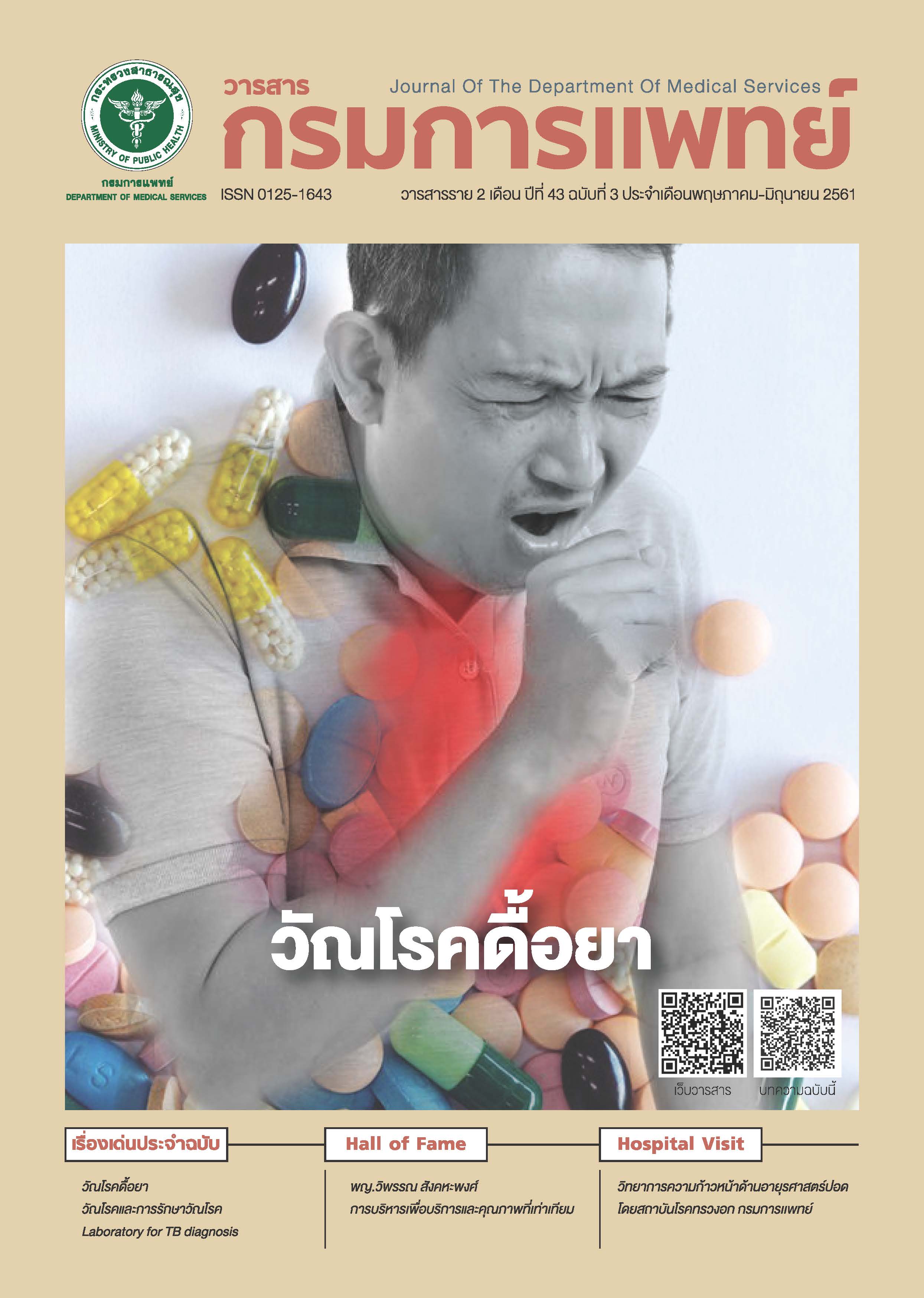Risk Factors of Falling in Post Stroke Patients after Discharge from the Hospital
Keywords:
Incidence, Stroke, FallingReferences
Hanchaiphiboolkul S, Poungvarin N, Nidhinandana S, Suwanwela NC, Puthkhao P, Towanabut S, et al. Prevalence of stroke and stroke risk factors in Thailand: Thai Epidemiologic Stroke (TES) Study. J Med Assoc Thai 2011; 94:427-36.
อมรา ทองหงษ์, กมลชนก เทพสิทธา, ภาคภูมิ จงพิริยะอนันต์. รายงานการเฝ้าระวังโรคไม่ติดต่อเรื้อรัง ปี พ.ศ. 2555. รายงานการเฝ้าระวังระบาดวิทยาประจำสัปดาห์ 2556; 44:145-52.
World Health Organization. Global Atlas on cardiovascular disease prevention and control. Geneva: World Health Organization; 2013.
อภิฤดี จิวะวิโรจน์, ณิชาภัตร พุฒิคามิน. การศึกษาความเสี่ยงต่อการหกล้มในผู้ป่วยโรคหลอดเลือดสมองระยะฟื้นฟูสภาพ. วารสารสมาคมประสาทวิทยาศาสตร์ ภาคตะวันออกเฉียงเหนือ 2556; 8:26-34.
Davenport RJ, Dennis MS, Wellwood I, Warlow CP. Complications after acute stroke. Stroke 1996; 27:415-20.
Schmid AA, Rittman M. Consequences of post stroke falls: activity limitation, increased dependence, and the development of fear of falling. Am J Occup Ther2009; 63:310-6.
Sze KH, Wong E, Leung HY, Woo J. Falls among Chinese stroke patients during rehabilitation. Arch Phys Med Rehabil 2001; 82:1219-25.
Belgen B, Beninato M, Sullivan PE, Narielwalla K. The association of balance capacity and falls self- efficacy with history of falling in community-dwelling people with chronic stroke. Arch Phys Med Rehabil 2006; 87:554-61.
Bergland A. Fall risk factors in community-dwelling elderly people. Norsk Epidemiologi 2012; 22:151-64.
Ocha W, Arayawichanon P, Manimanakorn N. Incidence of Falling in Stroke Patients after Discharge. J Thai Rehabil Med2010; 20:15-9.
Hyndman D, Ashburn A, Stack E. Fall events among people with stroke living in the community:circumstances of falls and characteristics of fallers. Arch Phys Med Rehabil 2002; 83:165-70.
Teasell R, McRae M, Foley N, Bhardwaj A. The incidence and consequences of falls in stroke patients during inpatient rehabilitation: factors associated with high risk. Arch Phys Med Rehabil 2002; 83:329-33.
Forster A, Young J. Incidence and consequences of falls due to stroke: a systematic inquiry. Br Med J. 1995; 311:83-6.
ชนากานต์ บุญนุช , ยุวดี เกตสัมพันธ์, สุทธิพล อุดมพันธุรัก,จุฬาภรณ์ พูลเอี่ยม, ปรีชญา พลเทพ. ขนาดกลุ่มตัวอย่างในงานวิจัยเชิงปริมาณ. เอกสารชุมชนนักปฏิบัติ คณะแพทยศาสตร์ ศิริราชพยาบาล มหาวิทยาลัยมหิดล. กรุงเทพมหานคร: โรงพยาบาลศิริราช; 2554.
Thiamwong L. Psychometric testing of the Falls Efficacy Scale-International (FES-I) in Thai older adults.Songkla Med J 2011; 29:277-87.
Jalayondeja C, Sullivan PE, Pichaiyongwongdee S. Sixmonth prospective study of fall risk factor identification in patients post-stroke. Geriatr Gerontol Int 2014; 14:778-85.
Chaiwanichsiri D, Jiamworakul A, Kitisomprayoonkul W. Falls among stroke patients in Thai Red Cross rehabilitation center. J Med Assoc Thai 2006; 89:S47-52.
Ugur C, Gücüyener D, Uzuner N, Ozkan S, Ozdemir G. Characteristics of falling in patients with stroke. J Neurol Neurosurg Psychiatry. 2000; 69:649-51.
Ashburn A, Hyndman D, Pickering R, Yardley L, Harris S. Predicting people with stroke at risk of falls. AgeAgeing 2008; 37:270-76.
Hellström K, Lindmark B, Wahlberg B, Fugl-Meyer AR. Self-efficacy in relation to impairments and activities of daily living disability in elderly patients with stroke: a prospective investigation. J Rehabil Med. 2003; 35:202-7.
Downloads
Published
How to Cite
Issue
Section
License
บทความที่ได้รับการตีพิมพ์เป็นลิขสิทธิ์ของกรมการแพทย์ กระทรวงสาธารณสุข
ข้อความและข้อคิดเห็นต่างๆ เป็นของผู้เขียนบทความ ไม่ใช่ความเห็นของกองบรรณาธิการหรือของวารสารกรมการแพทย์


